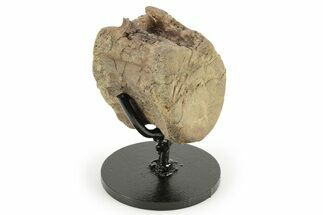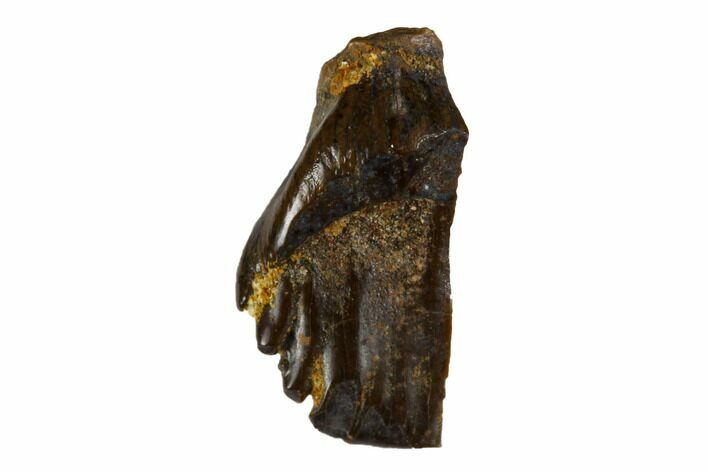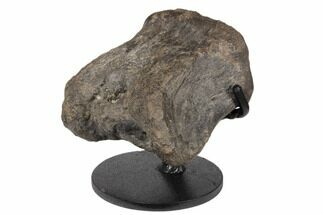This Specimen has been sold.
.4" Partial Nodosaur Tooth - Judith River Formation
This is a partial, .4" long tooth from a Nodosaur. It was collected from the Judith River Formation in Montana. While Nodosaur teeth are relatively abundant in the formation, not enough skeletal material has been recovered to describe the species.
One half of this tooth broke away and wasn't recoverable, hence the reduced price. Comes in an acrylic display case.
One half of this tooth broke away and wasn't recoverable, hence the reduced price. Comes in an acrylic display case.
Nodosaurs are a family of ankylosaurian dinosaurs that lived from the Late Jurassic to Late Cretaceous periods. They were medium to large-sized, quadrupedal herbivores that were heavily armored, adorned with rows of bony armor nodules and spines. Unlike ankylosaurs, nodosaurs lacked mace-like tail clubs. Nodosaurs possessed small, leaf-shaped teeth, which can be impossible to distinguish from ankylosaur teeth when heavily worn or weathered. Nodosaur teeth have a characteristic "shelf" visible below a pocket in the crown, and no center ridge.
The Judith River Formation is one of the world's most prolific sources of Late Cretaceous vertebrate fossils. At least sixteen Orders containing more than forty Genera are known from the formation. These include fish, amphibians, mammals, and insects in addition to reptiles and avian (birds) and non-avian dinosaurs. Among the more interesting specimens is Leonardo, a mummified and fossilized Brachylophosaurus. This is a hadrosaur, a duck-billed dinosaur found with amazing soft-tissue preservation: skin impressions can be found on 90 percent of its body! The pattern in the skin on its feet is even preserved. In addition to Leonardo, the Judith River Formation contains the remains of the theropod Hesperornis, the only known freshwater Hespernorthid, a penguin-like bird.
SPECIES
Undescribed Nodosaur
LOCATION
Hill County, Montana
FORMATION
Judith River Formation
SIZE
.4" long
CATEGORY
SUB CATEGORY
ITEM
#173479
We guarantee the authenticity of all of our specimens.
 Reviews
Reviews












